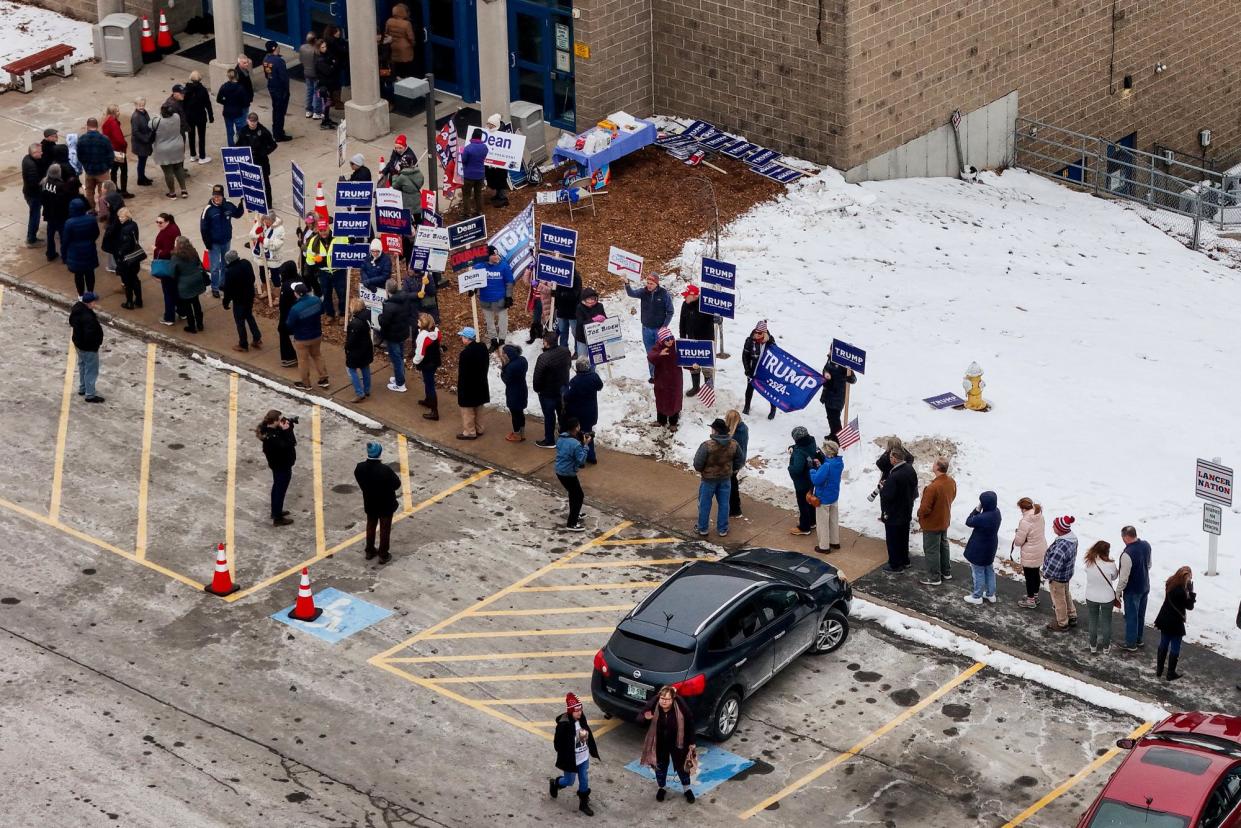New Hampshire primary set turnout record with more than 300,000 voting

- Oops!Something went wrong.Please try again later.
More than 300,000 voters turned out Tuesday to vote in New Hampshire’s presidential primary, underscoring Donald Trump’s tendency to mobilize both his diehard supporters, but also his most fervent detractors at the polls. The final results show fractures in the Republican party, even as the former president is on the fast track to the nomination.
The primary set a record for voter turnout in any previous New Hampshire presidential primary – a notable milestone given New Hampshire regularly turns out a higher share of voters than other states for presidential primaries. New Hampshire is also known for having a strong share of independent voters and conducts open primaries, meaning voters are not required to declare a party affiliation to vote there. For those reasons, former South Carolina governor Nikki Haley, Trump’s last challenger, hoped for an upset victory.
Related: Upbeat Haley vows to press on but prospects against Trump look bleak
Haley was ultimately unable to turn out enough independents – or Republicans who have soured on Trump – to beat him. But she was able to garner enough moderate Republican defectors to eke out 43% of the vote there, gaining 9 delegates while Trump earned 12. She has said she will stay in the race, doubling down on efforts to draw moderate voters ahead of the primary in her home state of South Carolina next month, despite Republican National Committee chair Ronna McDaniel’s statement Wednesday that she doesn’t “see it for Nikki Haley”.
“In 2016, Trump did pretty well amongst Republicans regardless of ideology,” said Christopher Galdieri, a professor of political science at Saint Anselm College in New Hampshire. This year, 73% of New Hampshire voters in the Republican primary who describe themselves as “moderates” broke for Haley. “That suggests, ‘OK, maybe there are some Republicans who are in play who could be convinced to close their eyes, hold their nose and vote for Biden in the fall,’” said Galdieri.
Some of the decisive factors could rest on how people feel about the key issues of abortion or democracy. The 6 January 2021 insurrection by pro-Trump rioters at the US capitol, for example, drove a split within the Republican party and Trump’s numerous criminal cases have deepened the divide, turning off moderate Republican voters but strengthening support among his strongest supporters.
Biden’s campaign, meanwhile, ran a strong enough write-in campaign to beat long-shot Democratic challengers Dean Phillips and Marianne Williamson – despite his name not appearing on the ballot after the Democratic party changed its process for conducting partisan primaries. Losing out to Phillips, who has led efforts within the Democratic party to challenge Biden ahead of the 2024 election, would have been an embarrassment for the Biden campaign.
His ability to pull off a write-in campaign – which would typically draw drastically fewer voters than on-ballot candidates – could suggest the president will be able to garner stronger turnout than expected, given his struggling poll numbers, in November.
There’s precedent for high turnout working in Biden’s favor. Turnout in the 2020 presidential election soared, with a higher share of eligible voters turning out to vote than in any other US presidential election in decades.
But this year holds another twist. Even if the 2024 election draws similarly strong voter interest, the presence of uncommonly strong third party candidates like conspiracy theory-touting Robert F Kennedy Jr, or Cornel West, who is running to Biden’s left, could complicate the picture for either party’s nominee.
Related: Who’s running for president in 2024? The Republican and Democratic candidates
All told, the Iowa primary, which garnered a smaller turnout – but more heavily favored Trump – and the New Hampshire primary, imply the general election in November could be decided by whether or not Trump’s detractors are motivated enough to put their vote behind a Democrat.
The first two contests of the year, however, are proof that Trump’s strongest supporters, including those who do not usually vote in presidential elections, will make it to the polls if their candidate is on the ballot come November.
“There are people who vote for Donald Trump when Donald Trump is on the ballot,” said Galdieri. “They might not vote other times – they might not have voted that much before 2016. But if you put Trump on a ballot, they will crawl over broken glass to get there and cast a ballot for him.”

